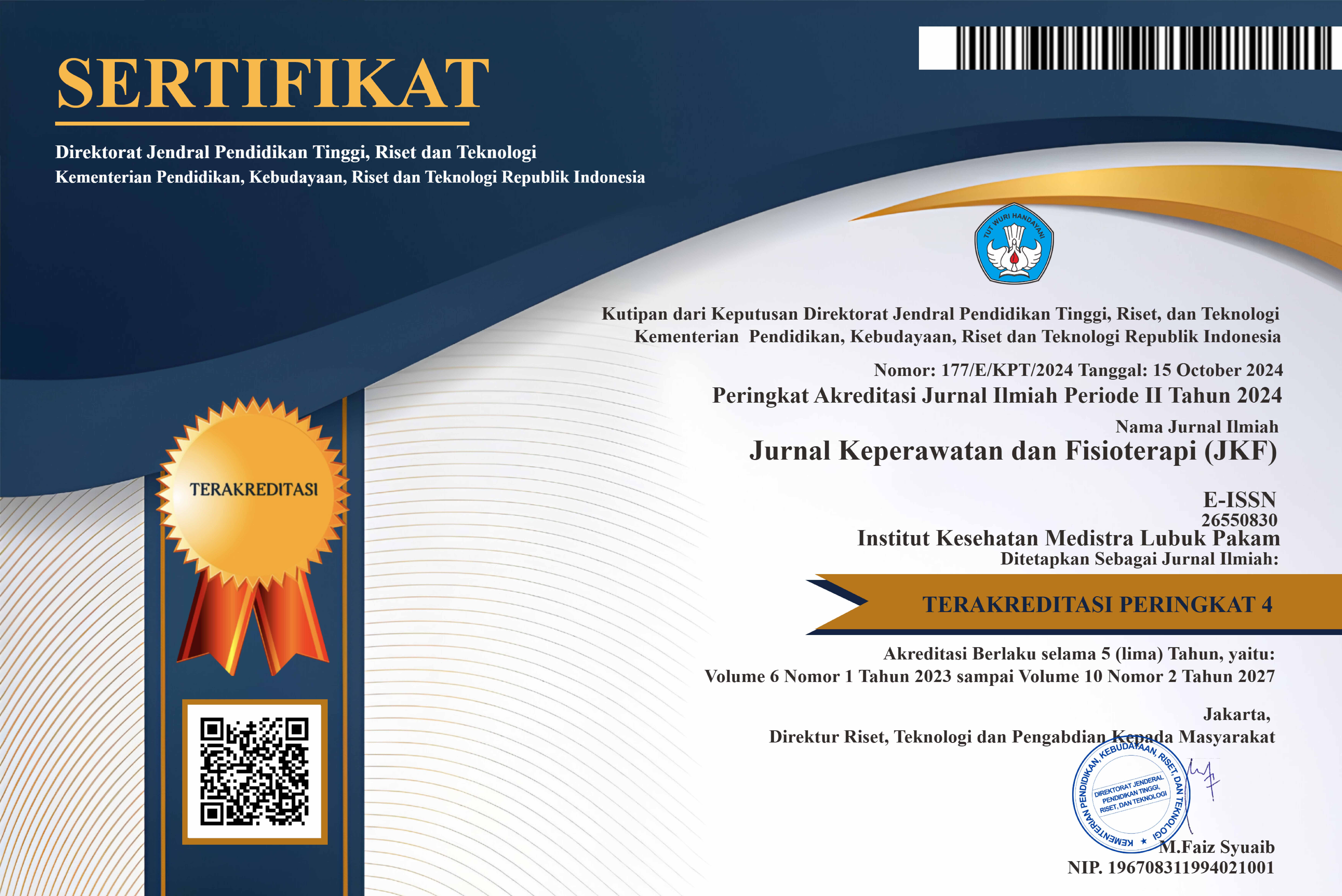Effect of Combination of Facial Acupuncture Therapy with Lavender Aromatherapy on Reducing Postpartum Maternal Anxiety Levels in Medan Tuntungan District
DOI:
https://doi.org/10.35451/jkf.v7i1.2292Keywords:
Postpartum mothers, Anxiety, Facial acupressure therapy, Aromatherapy with lavendersAbstract
Following childbirth, moms will undergo emotional fluctuations characterized by mood swings, anxiety, dizziness, and feelings of despair. Impaired maternal understanding of infant care can lead to psychological issues that impact the mother's physical well-being, including disrupted sleep patterns and reduced appetite. Failure to promptly manage anxiety in postpartum mothers can lead to the development of baby blues syndrome and postpartum depression.
This study employs a Quasi Experiment design with a pre-posttest not include a control group to quantitatively investigate the impact of combining facial acupressure therapy with lavender aromatherapy on anxiety reduction in postpartum mothers. The investigation was conducted in Medan Tuntungan District, located in Medan City. One hundred postpartum women constituted the sample in this study. The data collection process involved administering treatment (facial acupressure therapy with lavender aromatherapy), followed by observation and interviews conducted using the HARS instrument.
The analysis conducted using the Wilcoxon Signed Ranks Test revealed a negative ranks value of 94. This indicates that out of the 100 postpartum women who participated in the study, 94 mothers reported a reduction in anxiety levels. The positive rankings index is 0, indicating that none of the 100 postpartum moms who participated in the study reported a rise in anxiety levels. The tie value of 6 indicates that among the 100 postpartum moms who participated in the study, 6 mothers did not show any significant difference in anxiety levels before and after undergoing a combination of Facial Acupressure Therapy with Lavender Aromatherapy. Moreover, it is established that the significance value at this stage of analysis is 0.000 or greater than ? (0.05). Therefore, it can be inferred that there is a significant impact of the combination of Facial Acupressure Therapy with Lavender Aromatherapy on the reduction of anxiety levels in postpartum mothers.
Downloads
References
Dinkes Sumut. (2019). Profil Kesehatan Provinsi Sumatera Utara Tahun 2018. Medan.
Anggarini, I. A. (2019). Factors Relating of Postpartum Depression in Independent Practices of Midwife. Jurnal Kebidanan, 8[2], 94. https://doi.org/10.26714/jk.8.2.2019.94-104
Setiawati, D. N., & Purnamawati, D. (2020). Faktor-Faktor Yang Mempengaruhi Kejadian Depresi Postpartum Di Kabupaten Bogor Tahun 2019. Muhammadiyah Public Health Journal, 1[1], 1–10.
Rohmana, D., Jayatmi, I., & Darmaja, S. (2021). Determinan Kecemasan yang Terjadi pada Ibu Postpartum Determinants of Anxiety that Occurs in Postpartum Mothers. Jurnal Interprofesi Kesehatan Indonesia, 1 [1], 39–52.
Mayasari, Senditya Indah, and Nicky Danur Jayanti. (2020). SPA TREATMENT Untuk Prenatal Dan Postnatal. Solok: Insan Cendikia Mandiri.
Cahyanto, Erindra Budi. (2020). Asuhan Kebidanan Komplementer Berbasis Bukti. Pati: CV Al Qalam Media Lestari.
Sulistyorini, C. (2020). Efektivitas Kombinasi Terapi Totok Wajah Dengan Aromaterapi Lavender Terhadap Kecemasan Ibu PostPartum Dalam Perawatan Bayi. Jurnal Medika?: Karya Ilmiah Kesehatan, 5[1]. https://doi.org/10.35728/jmkik.v5i1.116.
Prawirohardjo, Sarwono. (2020). Pelayanan Kesehatan Maternal Dan Neonatal. 8th ed. Jakarta: PT Bina Pustaka Sarwono Prawihardjo.
Notoatmodjo, S. (2020). Promosi Kesehatan dan Ilmu Perilaku. Jakarta: PT Rineka Cipta.
Chandra Sulistyorini, Desy Ayu Wardani, A. (2020). Efektivitas kombinasi terapi totok wajah dengan aroma terapi lavender terhadap kecemasan ibu postpartum dalam perawatan bayi. Jurnal Medika Karya Ilmiah Kesehatan, 5[1], 1–8.
Downloads
Published
Issue
Section
License
Copyright (c) 2024 Erlina Hayati, Husna Sari

This work is licensed under a Creative Commons Attribution 4.0 International License.
Copyright in each article is the property of the Author.


























